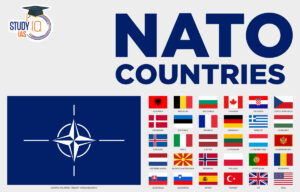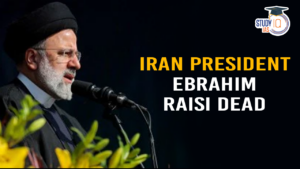Table of Contents
The Quebec Independence Movement is a political and social movement primarily based in the Canadian province of Quebec, where there has been a longstanding desire among some residents to achieve full sovereignty and independence for Quebec from the rest of Canada.
Quebec Independence Movement in Canada
The Quebec sovereignty movement is a political endeavor aimed at reestablishing Quebec’s sovereignty. Quebec has been a province of Canada since 1867, but sovereignists seek to assert Quebec’s right to self-determination. This principle allows the people of Quebec to choose between various options, including integration with a third state, political association with another state, or complete independence. The ultimate goal is to establish a sovereign state for Quebec with its independent constitution, all achieved through democratic processes.
Quebec sovereignists believe that an independent state would provide Quebec with greater autonomy to address its economic, social, environmental, and cultural needs and aspirations. At the core of the sovereignist movement in Quebec lies Quebec nationalism, which fuels the desire for greater self-governance and control over the province’s affairs.
Historical Background
The Quebec Independence Movement has its roots in Quebec’s history, culture, and language. Quebec is primarily French-speaking, and the movement often cites the preservation of French language and culture as a central reason for seeking independence.
Quebec Independence Movement Timeline
| Decade | Year | Event |
| 1960s | 1960 | The Quiet Revolution begins in Quebec. |
| 1963 | Parti Québécois (PQ) founded by René Lévesque. | |
| 1967 | Expo 67 raises awareness of Quebec nationalism. | |
| 1970s | 1970 | October Crisis: FLQ kidnaps British diplomat and Quebec cabinet minister. Martial law declared. |
| 1976 | Parti Québécois wins provincial election, René Lévesque becomes Premier, sovereignty push begins. | |
| 1980s | 1980 | First Quebec sovereignty referendum held, “No” side wins. |
| 1982 | Canada’s Constitution patriated without Quebec’s consent. | |
| 1990s | 1992 | Charlottetown Accord rejected in a national referendum. |
| 1994 | Jacques Parizeau becomes Premier, vows another sovereignty referendum. | |
| 1995 | Second Quebec sovereignty referendum held, “No” side narrowly prevails. | |
| 2000s | 2003 | Jean Charest becomes Premier of Quebec. |
| 2010s | 2011 | NDP makes significant gains in Quebec during federal election. |
| 2012 | Parti Québécois, under Pauline Marois, returns to power in Quebec (minority government). | |
| 2014 | No sovereignty referendum held, Quebec Liberal Party defeats Parti Québécois. | |
| 2020s | The Quebec Independence Movement remains active with periodic discussions and debates about the province’s future within Canada. |
Purpose of the Quebec Independence Movement
The Quebec sovereignty movement, often referred to as the “mouvement souverainiste du Québec,” is a political initiative focused on achieving Quebec’s independence from Canada. This movement advocates for Quebec to become a fully sovereign and independent nation, separate from its current status as a province within the Canadian Federation. Supporters of this cause seek to establish Quebec as a self-governing entity with full control over its political, economic, and cultural affairs. Over the years, the movement has seen significant milestones, including referendums and political leadership changes, shaping the ongoing dialogue about Quebec’s future within or outside the Canadian Federation.
Why did Quebec want to separate from Canada in 1995?
Quebec sought to separate from Canada in 1995 due to cultural, linguistic, and historical differences, with a predominantly French-speaking population seeking to protect its identity. The province’s history of political tensions, economic concerns, and constitutional disputes fueled the separatist movement. The 1995 referendum narrowly failed, but it led to changes in Canadian federalism. The Clarity Act was introduced to establish clear conditions for a future sovereignty vote. While the issue persists in Canadian politics, it has receded in recent years, with Quebec remaining part of Canada.
Quebec Independence Movement Key Political Parties
The Bloc Québécois is one of the most prominent political parties associated with the Quebec Independence Movement. The party’s primary goal is to advance the cause of Quebec sovereignty at the federal level of Canadian politics. In provincial politics, the Parti Québécois (PQ) has historically been the leading party advocating for independence. The PQ has formed the government in Quebec on multiple occasions and has held referendums on Quebec sovereignty.
| Type of French Canadian Nationalism | Ideology | Political Parties |
| Conservative (before 1960) | Conservative | Conservative Party |
| Coalition avenir Québec | ||
| Liberal (post-1960) | Liberal | Liberal Party |
| Social-democratic (post-1970) | Social-Democratic | Parti québécois |
| Bloc québécois | ||
| Québec solidaire | ||
| New Democratic Party (NDP) | ||
| Socialist (during the 1970s) | Socialist | Communist Party |
Quebec Independence Movement Details
Referendums
Quebec has held two referendums on sovereignty, one in 1980 and another in 1995. The 1980 referendum saw the “No” side winning with a substantial margin. However, the 1995 referendum was much closer, with the “No” side prevailing by a narrow margin of votes.
Issues and Arguments
Supporters of the Quebec Independence Movement argue that independence would allow Quebec to have full control over its political, economic, and cultural affairs. They often cite examples of other independent nations with smaller populations and economies as models for Quebec’s potential success as a sovereign state.
Federalism and Division
The debate over Quebec sovereignty has been a central issue in Canadian federal politics. Canada is a federal state, and the tension between Quebec’s desire for greater autonomy and the federal government’s efforts to maintain national unity has been a defining aspect of Canadian politics.
Ongoing Debate
While the desire for Quebec independence has not led to secession from Canada, it remains an ongoing and important political issue in the province. The level of support for sovereignty has varied over the years, and it is influenced by factors such as political leadership, economic conditions, and demographic shifts.
Legal Framework
The legal framework for Quebec’s potential independence is complex. The Canadian Constitution and legal precedents establish certain requirements for secession, including negotiations between the federal government and Quebec and, in the event of a “yes” vote in a referendum, a negotiation process to determine the terms of separation.
Quebec Independence Movement Current Status
The desire for Quebec’s sovereignty remains a significant facet of Canada’s political landscape despite a narrow defeat in the 1995 Quebec Referendum, where Quebecers chose to stay within Canada by a slim margin. Quebec, a province with a substantial representation in Canada’s House of Commons, hosts parties like the Bloc Québécois, advocating for its sovereignty. Recent surveys indicate a nuanced sentiment in Quebec. In June 2022, 33% favored independence, while 67% preferred remaining in Canada. A 2023 survey showed 33% supporting independence, with 51% in favor of continued Canadian affiliation. Indian politicians have invoked this issue in relation to Canada’s stance on India-related matters, emphasizing its ongoing relevance.
Conclusion
In conclusion, the Quebec Independence Movement has deep historical roots rooted in cultural and linguistic distinctions, with the desire for sovereignty fueled by a longing for self-determination and preservation of French identity. While Quebec’s two referendums on independence in 1980 and 1995 narrowly failed, the movement continues to shape Canadian politics, leading to the Clarity Act and ongoing debates about Quebec’s future. The movement remains active, with political parties like the Bloc Québécois advocating for sovereignty. Despite shifting sentiments over the years, Quebec’s desire for greater autonomy within or independence from Canada remains a significant and enduring aspect of the country’s political landscape.


 India-Canada Relations, Evolution, Recen...
India-Canada Relations, Evolution, Recen...
 NATO Countries List 2025, Check Out Memb...
NATO Countries List 2025, Check Out Memb...
 Iran President Ebrahim Raisi declared de...
Iran President Ebrahim Raisi declared de...





















